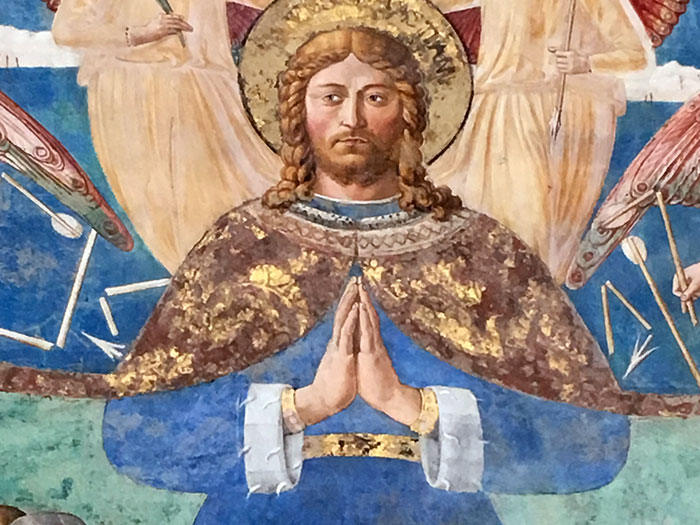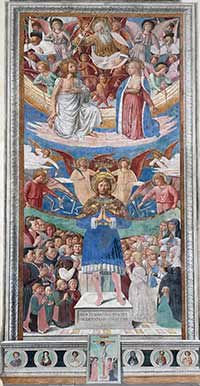Benozzo Gozzoli, San Sebastiano, Church of Sant'Agostino (San Gimignano) |
Benozzo Gozzoli (circa 1421 - 1497) was an Italian Renaissance painter from Florence. He is best known for a series of wall paintings in the Palazzo Medici-Riccardi with festive, lively processions with great attention to detail and with a distinct influence of international Gothic, an art movement that developed at the end of the 14th and the beginning of the 15th century.(2)
|
||
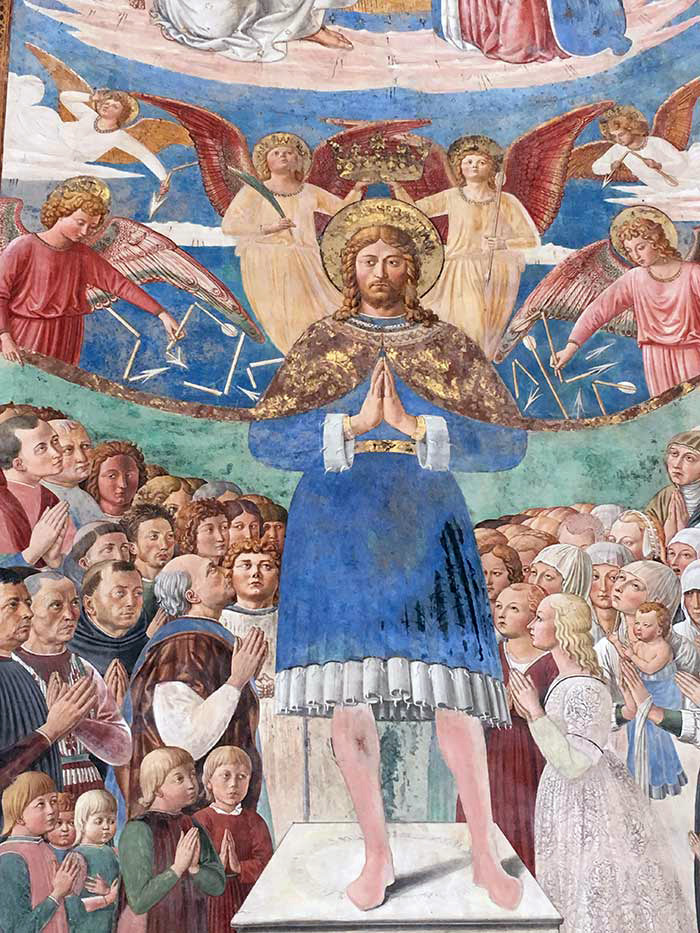 |
||
Benozzo Gozzoli, San Sebastiano (detail), dated 28 luglio 1464, San Gimignano, chiesa di Sant'Agostino (1)
|
||
The plague swept through San Gimignano in the summer of 1464. To call on St. Sebastian, the patron saint of plague sufferers, to intercede for the Lord's mercy, Benozzo Gozzoli was commissioned to paint fully two frescoes of the saint in the space of only eighteen months, one in Sant'Agostino and the other in the Pieve (now the Collegiata), depicting two different but complementary aspects of the saint. It took Benozzo and his workshop only sixteen days to paint the large fresco on the altar dedicated to the martyr in the church of Sant'Agostino, proving just how urgent the commission was. Instead of depicting Sebastian in the usual manner, virtually naked and bristling with arrows - symbols of the divine wrath thought to be the cause of the pestilence - the saint is shown fully clothed, his cloak open to protect the people from the arrows, not unlike a Madonna of Mercy.
|
|
|
| In heaven, Jesus points to His wounds and the Virgin to her breasts to pray on the people's behalf for the forgiveness of God the Father, who is angry with sinful mankind. The people kneel in reverence, their invocation expressed in the inscription on the pedestal. The mural was painted using a mixed technique consisting of fresco, tempera and gold, pointing up Benozzo's skill as a master of the art of fresco painting. During the restoration in 1990 it was established that the fresco was performed in no more than sixteen days, after which the artist could continue the work in the chapel of the church choir. |
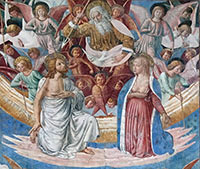 |
|
About two years later Benozzo painted another fresco, with the same subject, above the portal of the Collegiata Santa Maria Assunta in San Gimignano.(4) According to the Christian tradition, the wounds inflicted on Sebastian by the darts bore a resemblance to the bubos of the plague - people would invoke this saint in the hopes of being saved from the epidemic, just as he had been saved from the darts. |
|
|
Mappa Chiesa di Sant'Agostino (San Gimignano) | Ingrandire mappa
|
 |
 |
|||
Cappella dei magi, primo autoritratto di Benozzo Gozzoli
|
Benozzo Gozzoli, Martirio di San Sebastiano, Collegiata (Duomo) di San Gimignano | |||
|
|
||||
 |
 |
|||
San Gimignano, view from the Torre Grossa
|
San Gimignano, morning | San Gimignano
|
||
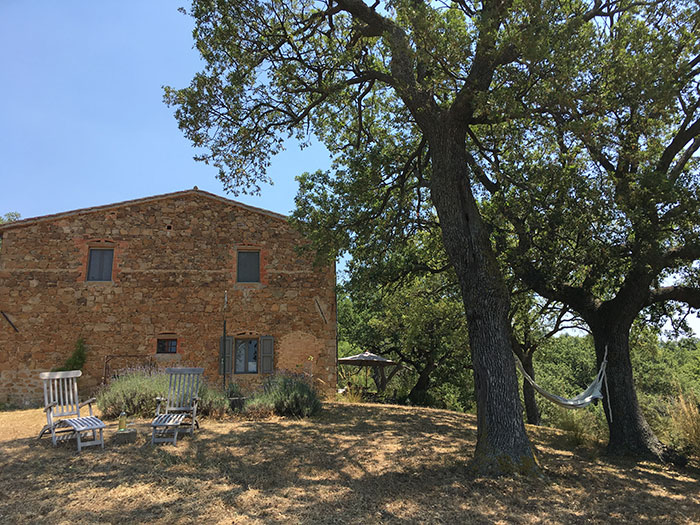 |
||||
La Casa Vacanze Podere Santa Pia è un sogno che diventa realtà. Partendo da Montalcino e viaggiando in direzione di Monte Amiata, si arriva nel cuore delle nostre colline dove si trova l'abbazia di Sant’Antimo, e vicino da Castiglioncello Bandini, il magnificoPodere Santa Pia. Qui trovate il piacere della quiete e la bellezza della natura toscana.
|
||||
The Stories of Saint Augustine |www.brunelleschi.imss.fi.it Benozzo Gozzoli | Fresco cycle in the apsidal chapel of Sant'AgostinoBenozzo Gozzoli | Benozzo Gozzoli in San Gimignano Art in Tuscany | Giorgio Vasari | Lives of the Most Excellent Painters, Sculptors, and Architects | Benozzo Gozzoli Benozzo Gozzoli | Storie della vita di sant'Agostino, Sant' Agostino, Cappella del Coro, San Gimignano Art in Tuscany | Benozzo Gozzoli | Saint Sebastian
[3] Fonte: Benozzo Gozzoli a San Gimignano, mostra 18 giugno – 1 novembre 2016, Pinacoteca San Gimignano, pres release
|
||||
This article incorporates material from the Wikipedia article Sant'Agostino Church, San Gimignano published under the GNU Free Documentation License. |
||||
